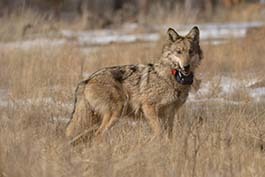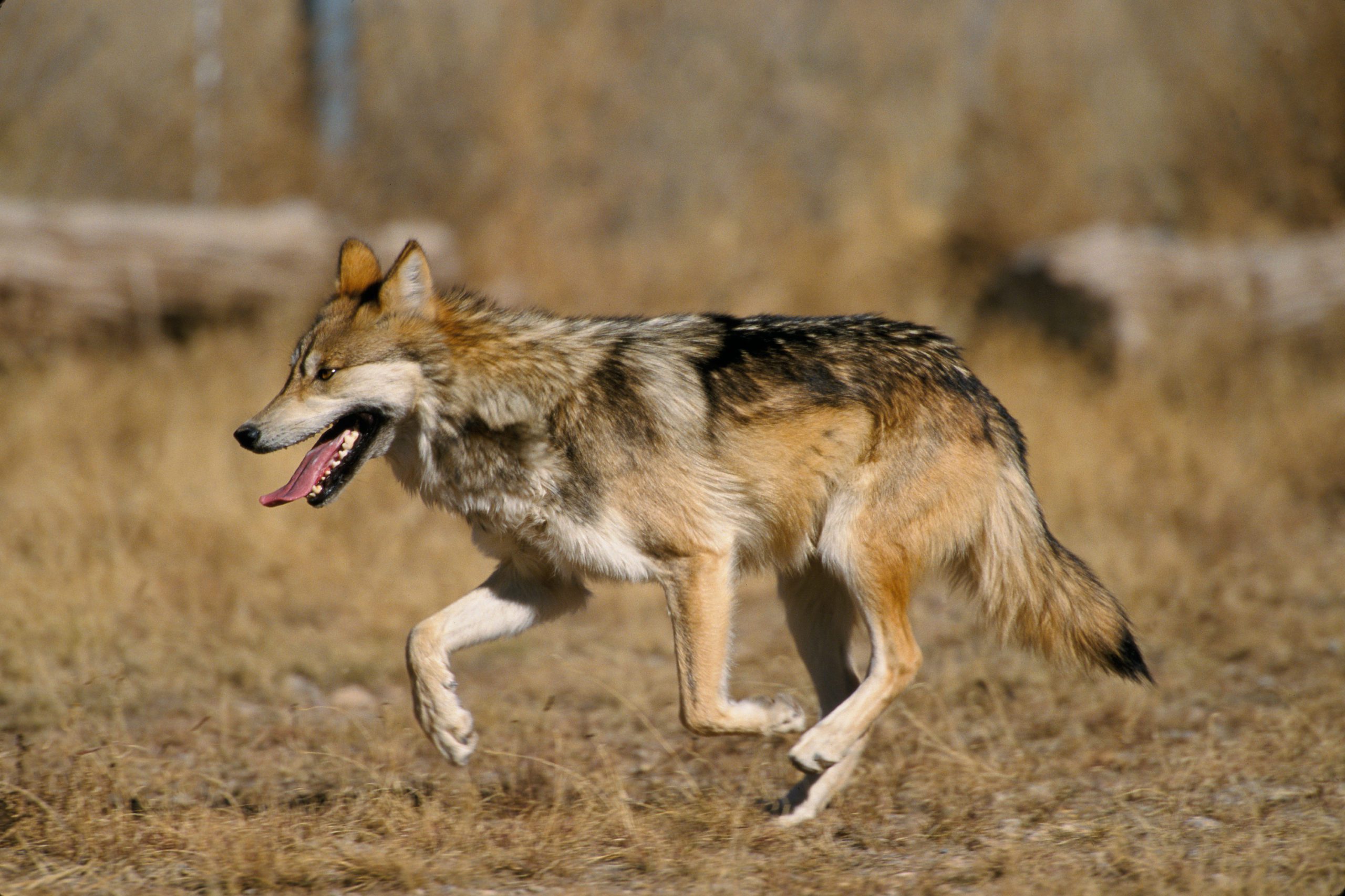Population of Wild Mexican Wolves Continues to Grow
Phoenix, Arizona, USA –
The population of wild Mexican wolves continues to grow at a healthy pace.
The recent Mexican wolf count shows the population has increased by 24% since last year, raising the total number of wolves in the wild to at least 163 animals.
A press release of the Arizona Game and Fish Department shows that number is among the findings of the Mexican Wolf Interagency Field Team (IFT), a task force comprising federal, state, tribal and international partners.
From November 2019 through January 2020, the team conducted field counts on the ground in Arizona and New Mexico that concluded with aerial counts of Mexican wolves in January and February.
According to the IFT, the 163 wolves are distributed as 76 in Arizona and 87 in New Mexico.
Last year, the team documented 131 wolves at the end of 2018, which was a 12% increase from 2017. This population has increased an average of 15% annually in the last 10 years.
2019 Findings:
- At the end of 2019, there were a minimum of 42 packs of wolves (including 11 new pairs), plus 10 individuals. A wolf pack is defined as two or more wolves that maintain an established territory.
- A minimum of 21 of the 28 packs the IFT monitored in spring of 2019 had pups and 19 of these packs had pups that survived to the end of the year.
- A minimum of 90 pups were born in 2019, and at least 52 survived to the end of the year (a 58 percent survival rate). Average survival of Mexican wolf pups is around 50 percent.
- The IFT documented 14 mortalities in the wild population of Mexican wolves in 2019. This is a 33 percent decrease from documented mortalities (21) in 2018.
During the aerial count, biologists captured 21 wolves and fitted them with new GPS tracking collars.
This brings the number of collared wolves in the wild to 103 (63% of the known population).
These radio collars use satellite technology to accurately record wolf locations on a frequent basis.
Biologists on the IFT use this data to gain timely information about wolf behavior in the wild and assist with management of the wild population.
In 2019, the IFT placed 12 captive-born pups into five wild dens (a process called “cross fostering”) to boost the genetic variability in the wild population. The IFT has since captured and collared two of these pups and will continue efforts in 2020 to document others that may have survived.
Since the first cross-fostering of Mexican wolf pups in 2014, the IFT has documented a minimum of nine cross-fostered pups recruited into the population and currently alive. Four cross-fostered wolves have survived to breeding age, resulting in multiple litters of genetically diverse pups born in the wild.
Three more cross-fostered wolves will reach breeding age in April of 2020.
Mexican Wolf
The Mexican wolf (Canis lupus baileyi) is the rarest subspecies of gray wolf in North America. It is listed separately from the gray wolf (Canis lupus) as an endangered subspecies under the federal Endangered Species Act.
Once common throughout portions of the southwestern United States and Mexico, it was all but eliminated from the wild by the 1970s.

Working with the Mexican government, the Service in 1977 began developing a captive breeding program to restore the wolf’s numbers.
It started with seven wolves, aiming for the day the program could release wolves into the wild.
That day came in 1998, when the Service, in cooperation with AZGFD, released 11 wolves within a range called the Mexican Wolf Experimental Population Area in Arizona and New Mexico.
In 2011, the program expanded to Mexico with the release of wolves in the Sierra Madre Occidental. Mexico currently estimates there are approximately 30 Mexican wolves in the Sierra Madre Occidental.
In November 2017, the Service completed a revised Mexican Wolf Recovery Plan, after working with state agencies and other partners.
The recovery plan uses the best available science to chart a path forward for the Mexican wolf that can be accommodated within the subspecies’ historical range in the southwestern U.S. and Mexico.
This revised plan provides measurable and objective criteria for successful recovery. When those goals are met, the Service will be able to remove the Mexican wolf from the list of endangered species and turn management over to the states.
¡Gracias por leer a The Border Reports!













